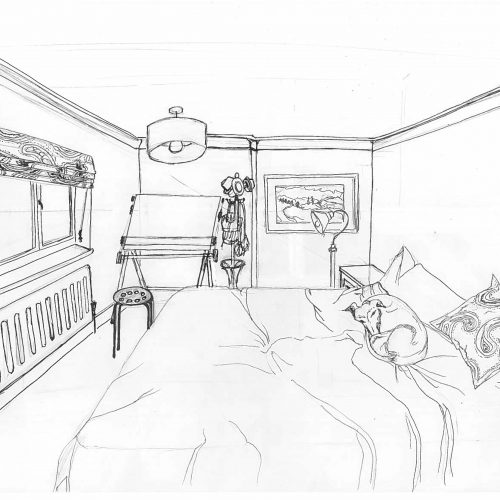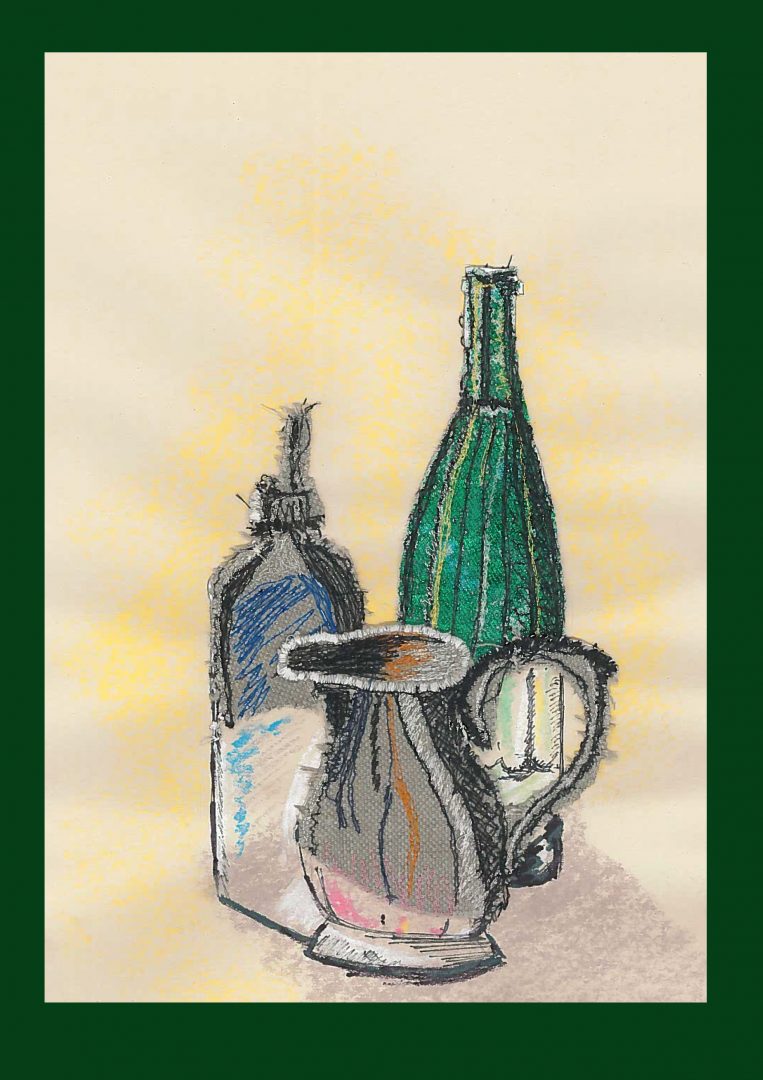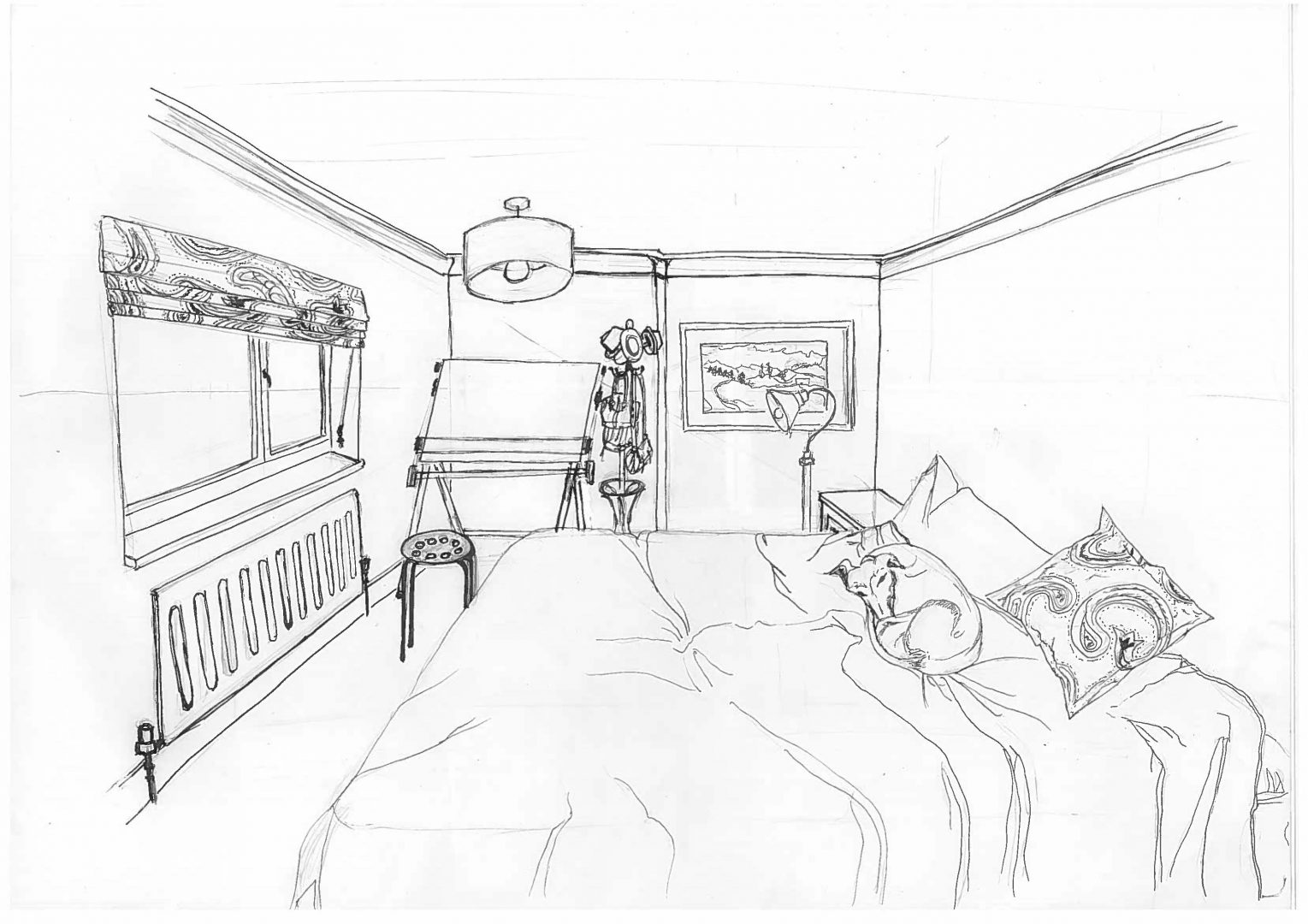
First past the post. Part 2
BA (Hons) Interior Design
A continued conversation between Programme Leader Catherine Byrne, and Interior Design student, Lee Anderson, who has just completed the first HE4 degree unit on the OCA Interior Design BA Hons course.
CB: Which exercise or assignment did you learn the most from?
LA: I learned the most from Part 2 – Project 1: Context – Precedent Studies, for which I chose the Reichstag by Norman Foster. I knew of both the Reichstag and Norman Foster but in truth very little, so taking the time to learn about each in much greater depth was fascinating and quite humbling. Undertaking this part of the course gave me a good understanding of the depth of knowledge required to create buildings and interiors to ensure there are connections, meaning and purpose.

CB: As you progress further through your studies you will find out lots more about all sorts of spaces, buildings, designers and architects. Along with everything written in the course documents don’t forget to follow your own design interests too; as you bury yourself in more knowledge you’ll make more and more connections between different styles, periods, designers and spaces, and gradually the meaning and purpose of these things will start to filter back into your own work. Context is vital – and it’s always changing…
CB: Is there anything in the course that you were surprised by?
LA: I think I was surprised by how much the course focuses on architecture. This is in no way a bad thing, just something I was not expecting and which has made me appreciate that interior design is much more than just furnishings and decor. It’s providing me with much wider knowledge than I was expecting, and as I’ve always appreciated a good building this is a real bonus.
CB: I think the word ‘architecture’ can sometimes be a bit scary and off putting. Interior Design focusses on the inside of buildings, and ‘architecture’ is often perceived as just ‘buildings’. If we use the words ‘built environment’ or ’spatial design’ for both interior and exterior spaces, from tiny to huge and every scale in-between – then the skills and knowledge required to be able to manipulate those spaces are remarkably similar…
Furnishings and decor are like the icing-on-the-cake; they finish it off and make it look/feel nice – but the cake is the bit to really get your teeth into!
CB: Is there anything in the course that you thought was missing?
LA: No I can’t say I think there is anything missing as there is still so much to come, so far I have been provided with a wider subject base than I expected.
CB: Phew!
CB: Did you feel there were any parts of the course where collaboration with other students may have been helpful?
LA: This is difficult to answer as we don’t know one another or know where our interests and strengths lie as yet. I know you are currently trying to organise a group work study event for Interior Design students, to meet and undertake a practical exercise. This is where I think collaboration will be really useful and be a great opportunity for possible future collaborations, once we have had a chance to meet face to face and get to know one another a little more I think it will make the process easier .

CB: We’re trying to build some more collaborative elements into the Interior Design courses as this is a fundamental skill for students to develop. Collaboration is essential in designing, whether it is with other designers, builders, craftspeople, contractors, artists, makers, clients… Design is always a team effort so I feel it’s important to include collaboration as much as possible. I’m hoping that as the Interior Design programme grows at OCA, group work events – like the site surveying workshop, and others – will become regular occurrences so that students can drop in and meet new colleagues whilst learning fundamental skills. Watch this space for more ideas of collaborative opportunities soon!
CB: Are you more interested in the practical application of interior design, or in the theoretical aspects of the field of spatial design in general? Or maybe both?
LA: I’d say I’m interested in it all. Initially I probably just appreciated beautiful or quirky objects and exquisite craftsmanship but after being involved in the refurbishment and redesign project I recognised the need for careful space planning and considering the flow and movement through a building. It also made me look into design for wellbeing, which I now have a real interest in.
CB: It’s great to discover a new personal interest in an aspect of design as you have in design for wellbeing. It can encourage you to look at the subject in more depth and gain a deeper understanding of why particular design moves evoke particular feelings. You can then try out these ‘moves’ in other design environments and see if they have the same effect… Some do and some don’t, but it’s a useful way to use your passionate interest (design for wellbeing) as a ‘hook’ to broaden your general design knowledge.
CB: What are you looking forward to most in the next interior design course?
LA: I’m looking forward to learning more and consolidating the skills and knowledge I have learned in the first part. For me it’s important to revisit to really embed to help the application of skills feel more natural. But, I’m just open to furthering my knowledge in this exciting subject area.
CB: I’m glad you’ve mentioned embedding and building on the skills you’ve learnt as this is essentially how spatial design education progresses. As you work through the BA units you’ll be exposed to different design environments, processes and situations in order to broaden, develop – and then fine tune – your fundamental spatial design skills.
The next course unit investigates designing through ‘play’ and using different methods to spark your creative thought processes; I’m hoping it will be lots of fun too!
|
|






